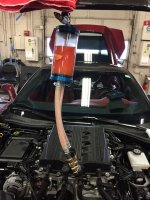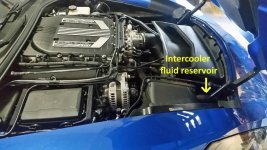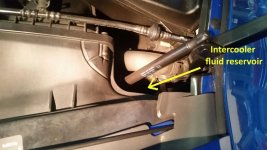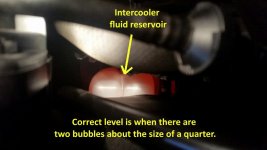First, understand that the automatic powertrain generates more heat than does the manual powertrain. As current Corvette cooling technology has all the heat generated by the powertrain shed by the engine coolant radiator, ECT is a much more critical issue. 282°F is way too high for ECT under track conditions. Once you see ECT go past 250-260, I'd back off.
As to my earlier comment about RPM, with respect to track use, I was talking about part throttle operation. Often I see drivers going though part throttle parts of a course in two low a gear, such that their RPM is at the high end of the engine's torque band. That causes two problems: 1) it generates more heat and 2) it may put you at the wrong RPM when coming off a turn, for example: you exit a turn near redline in second when you should be near peak torque in third.
Now, as for simple changes you can make to gain a modest reduction in ECT: 1) use premium full synthetic lubricants rather than the blended or semi-synthetic lubricants which are factory fill in the engine and rear drive unit (RDU). This is because premium synthetics typically reduce lubricant temperature. Since all powertrain heat goes into the coolant, whatever you can do to reduced lubricant temperatures helps your coolant temperature problem.
For track use in the LT4, I'd use Gibbs Driven DT40 5W40. DT40 is an mPAO-based, premium full-synthetic engine oil. In the rear axle I'd use Gibbs Driven 75W110 Gear Lubricant. Keep in mind that a Z06 has an external, electronically-controlled limited-slip differential (eLSD) so the choice of gear lubricant does not need to be compatible with a traditional, internal limited slip. Gibbs Driven has a new ATF which meets the Dexron 6 specification but I could not find it on the
Gibbs Driven web site. For track events, that's the stuff to use your trans and you'll need to find a trans shop which will flush and refill your trans with that. I'd try calling Gibbs Driven for more info on getting ahold of some of that Dex 6 ATF. (704) 239-4401
As for coolant you should reduce the level of antifreeze in your coolant. I'd start with a 15/85 mix of antifreeze and water along with Gibbs CST additive which supplies the anti-foaming, anti-corrosive and wetting agent you need for track use. You also can go to straight water which is an even better coolant, but, if you do, you must use CST, you must change the coolant ever two years and you must not park or store the car anywhere that gets below 32°F
Also, I'd switch your charge air cooler coolant to straight water and Gibbs CST. Note that changing the charge air coolant is not an easy job. Special equipment is required to fill and bleed air out of the system.
Anything you can do to increase airflow through the cooling stack will help. Tape over openings though which cooling air can bypass the radiator. Remove the front plate if it obstructs air flow...stuff like that.
Beyond those things, you get into real money...a bigger radiator.









